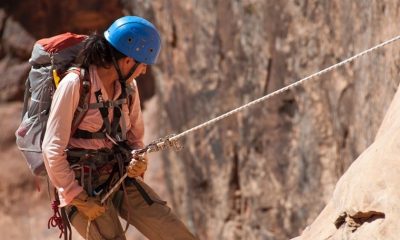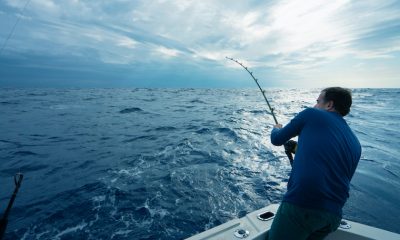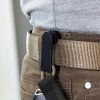Sports & Travel
A Beginner’s Guide to Tennis Equipment
With polyethylene and polyester being resistant to fading from UV radiation and harsh weather, these materials are the ones to choose from when you’re on the hunt for a decent tennis net.
With nearly one million Australians aged 15 and above playing tennis, it’s safe to say that tennis is among the most popular sports played here. If you’re debating starting the sport, don’t think twice, tennis is a great activity with both physical and mental gains. To begin a game of tennis, you don’t need expensive equipment or a large group of players to play, you only need one opponent and a few items. A tennis racket, tennis shoes, a tennis ball, and a tennis court with a regulation net are the only items required to play a tennis match.
Tennis Net
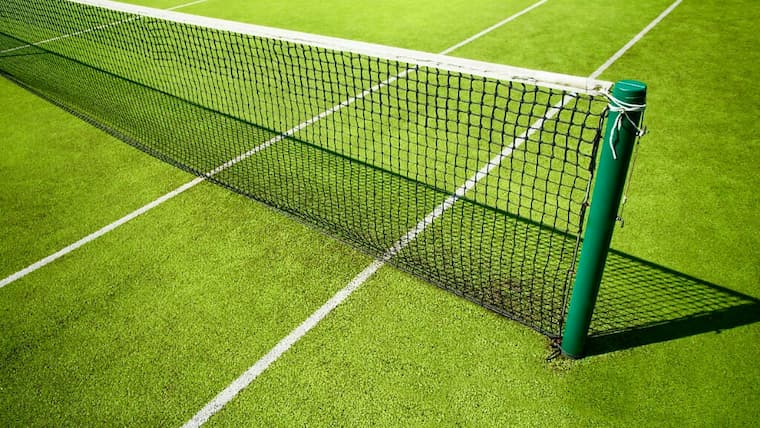
The sort of tennis net you select is determined by a lot of factors. Courts that get a lot of traffic and/or have extensive playing seasons require a net that will last and look neat for a long time. With polyethylene and polyester being resistant to fading from UV radiation and harsh weather, these materials are the ones to choose from when you’re on the hunt for a decent tennis net. The best tennis nets are constructed of braided net cord material and feature double the mesh at the top 6 rows, side pockets for fibreglass dowels, and vinyl-coated steel wires.
Braided nets outperform twisted nets because they are stronger and absorb more energy. When a ball strikes the net, it falls closer to it rather than rebounding off of it. Which headband is suited is determined by the type of court surface as well as a personal choice. Headbands are often made of vinyl or polyester duck, with two layers and four rows of lock stitching to keep the layers in place. Nets with polyester duck headbands are preferable for hard courts over soft courts because surface material can readily adhere to and discolour the fabric. Vinyl headbands are more prevalent on soft courts since they are simpler to clean and have a higher resistance to dirt. Balls, on the other hand, have a tendency to slide wildly off vinyl headbands, which is less likely with a duck headband since the duck material absorbs the ball’s energy rather than speeding it up.
Two net posts, a metal wire or cord, a white strap, and a white band are required to make a tennis net. The tennis net should be connected to two 107-cm-high side poles. The height of the net in the centre of the tennis court should be 91.4 cm. The strap should be used to secure the net to the middle of the court. The strap should be white and no wider than 5 cm. A band that is fastened into the ground pulls the net down in the centre. The net must be strung such that it completely covers the space between the two poles. Of course, the net must be tightly woven so that the ball cannot pass through while the game is being played.
Tennis Racquet
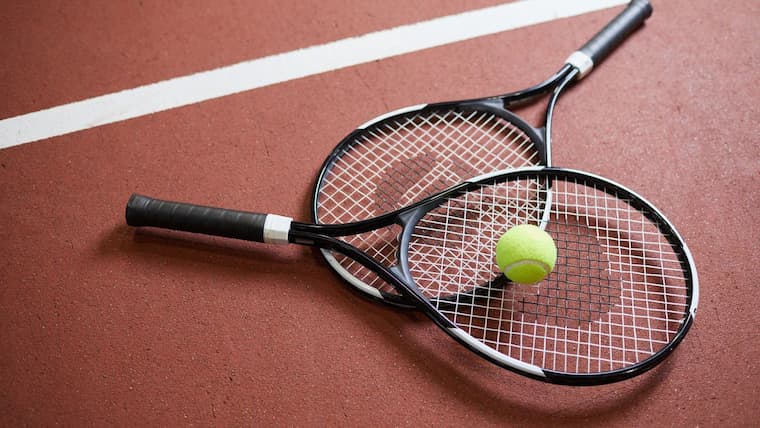
Buying a tennis racket, or any new tennis equipment can be a tough time, especially if you haven’t been playing for long, and no one wants to pay for something as personal as a tennis racket unless they know it’s the best option for them.
Certain rackets will be more suited to various tennis players based on their size and power. If you naturally have more strength, you will need to utilize a racket that offers you better control while without adding too much force to your game. On the other side, you may believe that you require assistance in creating greater power.
In general, the larger the frame of a racket, the more power it will provide you. If you look attentively at the professionals on television, you will see that the frames of their rackets aren’t particularly wide. This is because they are typically strong players who can generate their own power rather than relying on their racket to do it.
The weight of your racket is important in your swing and should be a significant deciding factor when purchasing a racket. It is true that most manufacturers will provide multiple weights of the same racket, so don’t be afraid to ask or seek for a racket you like but in a different weight, as any decent racket maker should be able to do this. Heavier rackets (320g and above) are typically more powerful than lighter rackets (310g and below), but they are less maneuverable and can exhaust a player. And keep in mind that strings add about 30g to a racket’s weight.
Tennis Balls
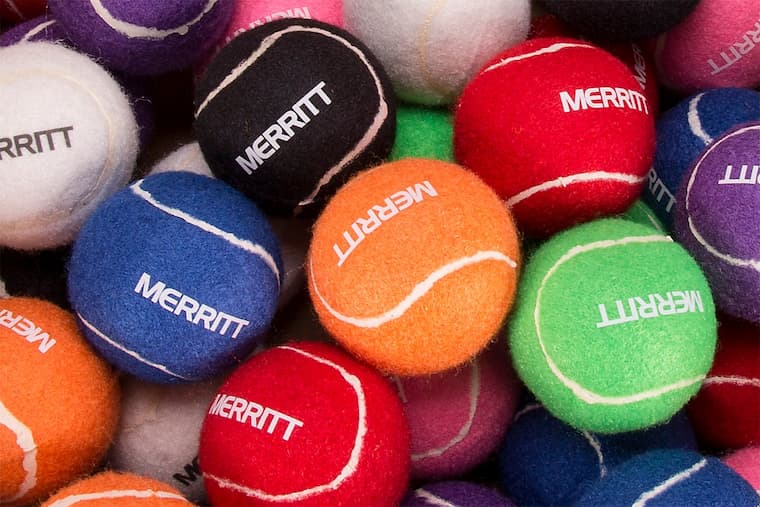
So, how does one go about selecting tennis balls? You must first determine your tennis demands and then select the balls that will meet those needs. When purchasing tennis balls for children, use slower balls also known as pressureless balls. If you play on hard courts, you should use extra-duty balls to ensure that they survive longer. If you reside in a high-altitude area, use pressureless balls to get the most out of your game.
One of the most noticeable distinctions between tennis balls is that some of them are pressurized while others are not. Pressurized tennis balls are created by adding internal air pressure to the balls, causing them to bounce extremely high. The most popular tennis balls are pressurized tennis balls, which are also the official balls of all major tennis events. Pressureless tennis balls, on the other hand, do not contain compressed air. As a result, they do not bounce nearly as high as pressurized balls, implying that they are called “slower” balls.
Because the standard is for tennis balls to be pressurized, you should be able to locate some indication on the packaging indicating the balls are pressureless. If you’re still unsure, it’s fair to assume that if the balls arrive in a packaging that needs to be “popped” (vacuum-sealed), they’re pressured balls. They are generally pressureless if they are packed with a box or mesh.
Tennis Shoes
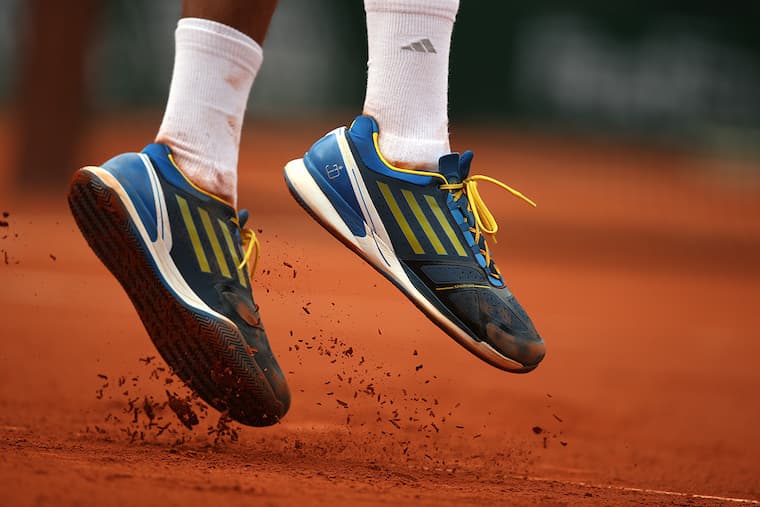
Ideally, you should select a tennis shoe with an outsole that is specially built for the sort of surface you’ll be playing on. Why? Because clay, hard, and grass courts all play differently, your game and footwork will alter slightly. Wearing a tennis shoe suited to handle the construction of the court is essential for maintaining good footing on each court surface.
A hard court is the most common and played tennis surface, and it’s also the most demanding in terms of your shoe durability. As a result, you’ll need an outsole that can withstand the rigours of this terrain. Hardcourt tennis shoes often have a modified herringbone pattern to provide the ideal balance of grip and give on the court. They’ll usually have plenty of cushioning and a midsole that helps transmit energy into each stride you take while also absorbing stress from the tougher terrain. They often have a robust top that aids in support and durability. For the toe draggers out there, the toe region is frequently built up and covered, since a gritty hard court may really do some harm to your shoe.
A zig-zag tread pattern is common on the outsole of a clay court shoe. This design keeps clay out of your outsole, allowing you to grip the court better whether sprinting, stopping, or changing directions. If some clay does accumulate, a couple of taps on the shoe with your racquet between points should loosen it. This makes sliding from side to side more predictable, allowing you to flawlessly glide into and recover from a shot. It also offers the necessary traction for safely going forward and backward.
Grass, like clay, is gentler on your body and joints. While there aren’t many grass court shoe options, this surface tends to play quickly, so you’ll definitely want to wear a tennis shoe with a grass court outsole. The outsole of a grass court tennis shoe has “nubs” or “pimples” that resemble cleat-like shoes. This outsole provides excellent traction for players on slick terrain. Despite the rough outsole, it should not do any harm to the court and will let players move swiftly on this fast surface. These, unlike hard court shoes, cannot be used on other surfaces.
Racquet Bag
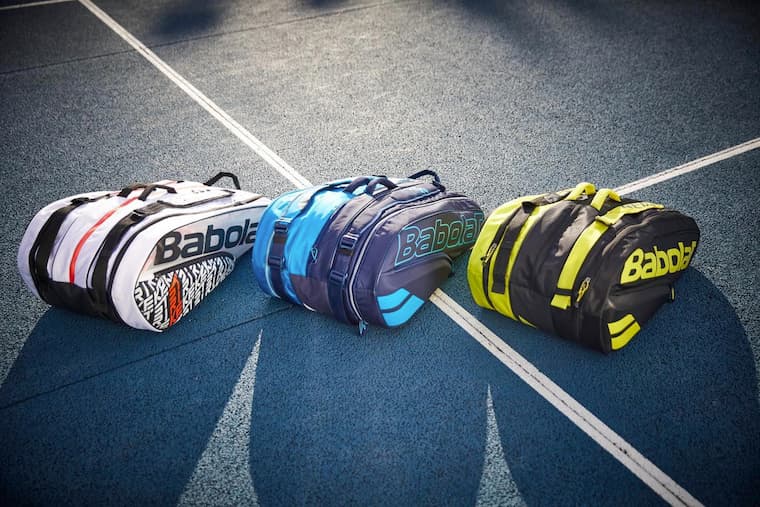
You probably possess one, maybe two tennis racquets if you’re a tennis player who visits the local courts a few times a month or a novice who is just acquiring a feel for the game. If that’s the case, a 3-pack bag could be plenty for you. A 3-pack has one compartment that can hold three racquets at maximum. If you don’t have three racquets, there’ll be enough place for a change of clothes and some accessories. These purses frequently have an external zipper pouch for keys, wallets, and other small items.
The 6-pack may be the most practical backpack size for more skilled players who want to carry a few backup racquets as well as other tennis supplies. A 6-pack has one compartment for 2-3 racquets, as well as an adjacent compartment for a spare pair of shoes, a change of clothing, food, and a few other essentials.
Looking for a simple and elegant backpack to transport your tennis equipment? Tote bags are the ideal answer. Totes with reinforced shoulder straps and eye-catching patterns may add individuality to your game while transporting your racquet, tennis gear, and personal belongings.
Whether you’re five or fifty-five, tennis is the sport for life that offers many physical and mental benefits. Tennis may be an excellent choice for your health because it provides a full-body workout. It activates a variety of muscles, including your heart, which increases the pace of oxygen intake, and your quadriceps and hamstrings, among others. It is seen as a socially distancing sport that may be played securely without fear of contracting the COVID-19 epidemic.
As a proud Pisces known for the selflessness, Olivia joined up the blog fascinated by the idea she can help readers with info on topics and their related benefits like health and beauty, travel, food and drinks. When not writing, she likes to call it a day reading comic books in the company of her Tonkinese cat Chatty or binge-watching The Big Bang Theory with her SO like the nerd she is.





